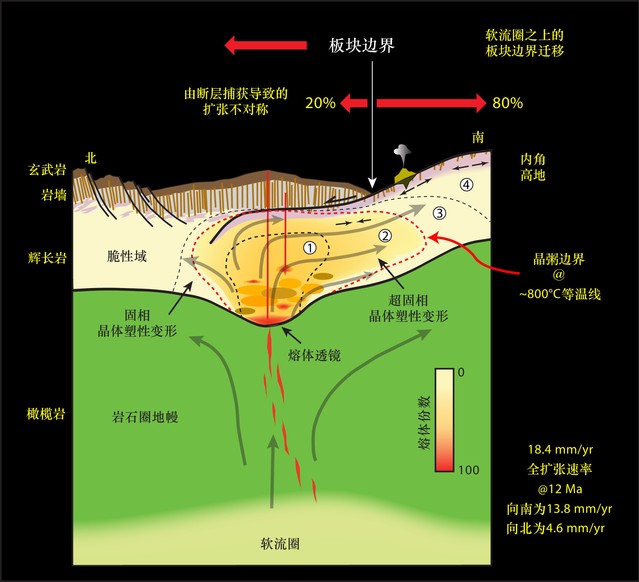Qiang Ma1, Henry J. B. Dick1,2 ✉, Benjamin Urann2, and Huaiyang Zhou1✉
1State Key Laboratory of Marine Geology, Tongji University, Shanghai, China,
2 Department of Geology and Geophysics,Woods Hole Oceanographic Institution, Woods Hole, MA, USA
✉email: hdick@whoi.edu; zhouhy@tongji.edu.cn
Abstract
Drilling 809‐m Hole U1473A in the gabbro batholith at the Atlantis Bank Oceanic Core Complex (OCC) found two felsic vein generations: late magmatic fractionates, rich in deuteric water, hosted by oxide gabbros, and anatectic veins associated with dike intrusion and introduction of seawater‐derived volatiles. Microtextures show a change from compressional to tensional stress during vein formation. Temperatures and oxidation state were obtained from amphibole‐plagioclase and oxide pairs in the adjacent gabbros. Type I veins generally have reverse shear‐sense, with restricted ΔFMQ, high Mt/Ilm ratios, and low‐amphibole Cl/F indicating deuteric fluids. They formed during percolation and fractionation of Fe‐Ti‐rich melts into the primary olivine gabbro. Type II veins are usually hosted by olivine gabbro, occur at dike contacts and the margins of normal‐sense shear zones. They are undeformed or weakly deformed, with highly variable ΔFMQ, low Mt/Ilm ratios, and high‐amphibole Cl/F, indicating seawater‐derived fluids. The detachment fault on which the gabbro massif was emplaced rooted near the base of the dike‐gabbro transition beneath the rift valley. The ingress of seawater volatiles began at >800°C and penetrated at least ~590 m into the lower crust during extensional faulting in the rift valley and adjacent rift mountains. The sequence of the felsic vein formation likely reflects asymmetric diapiric flow, with a reversal of the stress regime, and a transition from juvenile to seawater‐derived volatiles. This, in turn, is consistent with fault capture leading to the large asymmetries in spreading rates during OCC formations and heat flow beneath the rift mountains.
Full Article: https://doi.org/10.1029/2019GC008795



